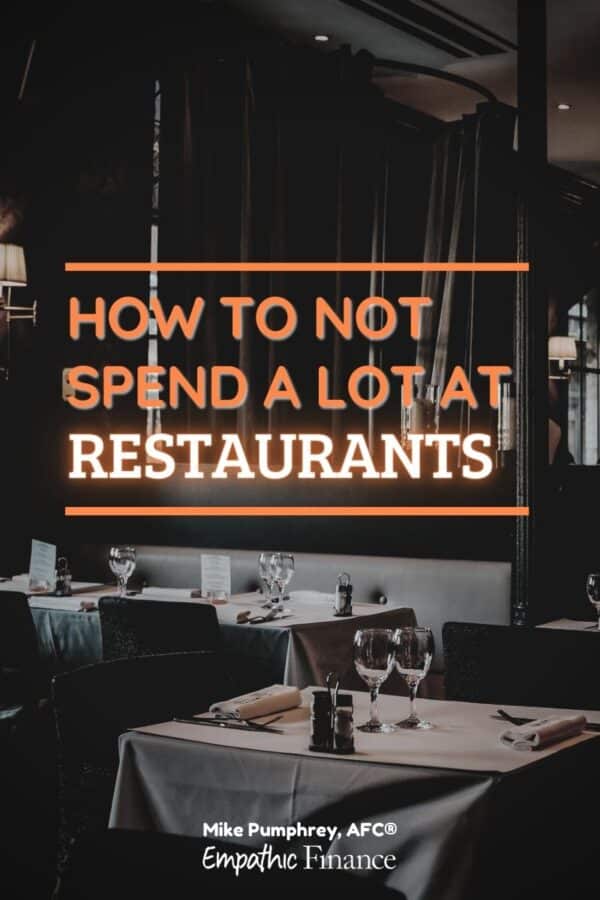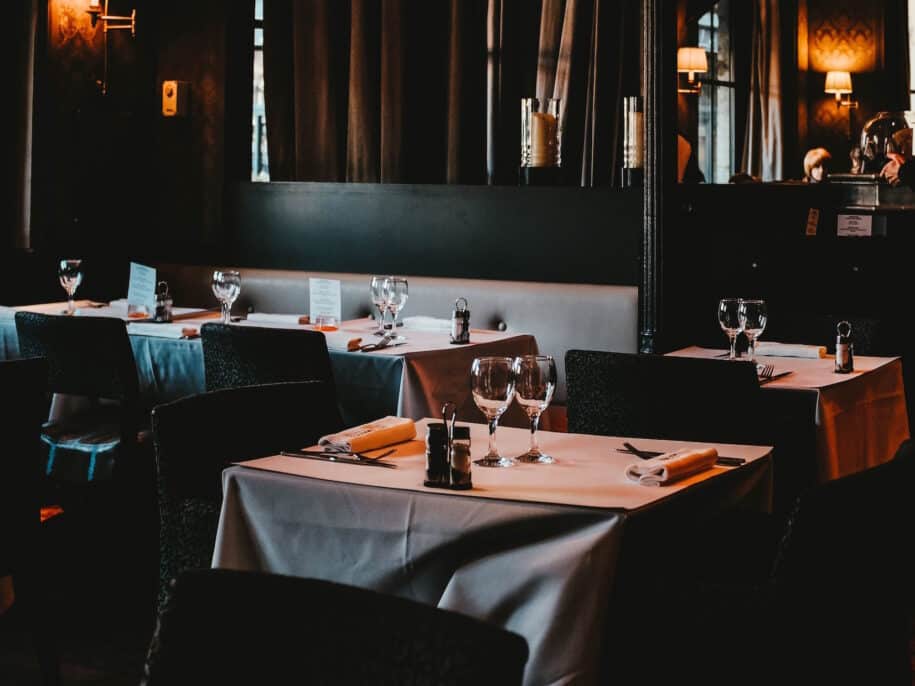Spending more intentionally will allow you not only to enjoy restaurants more, but also enjoy them more frequently.
I love going out to eat at restaurants. And I refuse to feel bad about it.
You shouldn’t either. I say this because it’s very common for my clients to say that they “eat out too much”, or they “shouldn’t do DoorDash so much”. And I generally don’t agree, at least not on principle.
The way I see it, I want you to have the money to spend on what is important to you. If restaurants bring you joy, then it’s worth it to make sure that you have the money for them, and enjoy without guilt.
(But of course, you want to have money for everything else that’s important for you too!)
So while I don’t think it’s important to a priori spend less on restaurants, I think it’s also important to spend intentionally, and this goes for restaurants too.
And restaurants make it very easy to spend unintentionally. QR code-based app ordering doesn’t help. And another bottle of wine while you’re at it!
But really, does all that extra ordering really add to your pleasure spending time out with friends and family, enjoying good food and drink? For me, not so much.
Also, you can enjoy restaurants more frequently if you spend less when you go out to them! This is a win-win situation.
So let’s talk about way that you can enjoy your favorite restaurants without spending unintentionally.
Table of Contents
Share an entree and an appetizer
Unless you’re going to a tapas restaurant, portions in the U.S. are huge. And entrees are usually more than one meal.
Yes, you could get a take out box and take some home with you, but I think it’s even better to not order food for tomorrow if you don’t need to.
And besides, leftovers aren’t as good anyway.
So if you’re out with someone else, consider ordering an entree and an appetizer and splitting them. In my experience, this tends to be the right amount of food for two people. And you don’t need to take anything home with you.
Order in phases
We are terrible at knowing how much we want to eat, especially at an unfamiliar place.
Because of this, I recommend you order less than you think you might want. In the above example, maybe you order a single entree for two people. And if you’re still hungry when the meal comes, you can always order more.
But likely, you won’t have to.
Don’t drink
I recall hearing from someone who went to the French Laundry, a notoriously posh restaurant in California. Upon hearing that the bill was around $2,500, once I picked my jaw off the floor, I asked how it came to be so much.
“Well the meal itself was only about $800. Everything else was the wine.”
Alcohol can easily double or triple the price of a meal. And because drink doesn’t give us the same satiety cues as food (and because cocktails are barely any liquid), our capacity for drinking is massive.
But I’m here to remind you that a good meal doesn’t require alcohol, so if jettisoning drink is what allows you to eat out more, then it’s worth considering.
Also, a club soda with quality bitters and a lime is mighty tasty.
Order drinks later
If drinking is important to you, that’s okay. But I might suggest perhaps not ordering drinks first, before the food.
You could make sure that the drinks come with the meal. Or you could save your imbibing for the dessert course.
These ideas would allow you to still have drink, but lessen the amount of time that you’re drinking, which would surely reduce the amount of drink that you purchase.
Do lunch (or happy hour)
Going out between 6 and 9 is when everyone else does it, and therefore you pay the most at that time.
But restaurants are often open all day, and some even have the same menu items for less money earlier in the day.
This was how I went to Le Bec Fin, a now-closed pricey establishment in Philadelphia, years ago. Instead of going for dinner, we went for lunch, and got the same rarefied treatment and quality gastronomy that we would have gotten at dinner, but at a significantly reduced price.
Enjoy the meal
Remember that the idea here is not to enjoy going out to restaurants less often, and especially not to enjoy them less.
Instead, the purpose here is to make intentional choices that allow you to experience the best parts of your restaurant experience more often, while jettisoning the parts that don’t matter as much.
I know that’s probably not what you expected to hear from a financial coach, but I personally think that focusing on finding ways to do what you love is more likely to be successful than merely trying to minimize your spending. Don’t you agree?



